How Much Does a Tractor Cost?
How Much Is My Tractor Worth?
Best Tractors for Small Farms
How Much Does a Tractor Tire Weigh?
Most Useful Tractor Implements
Most Popular Tractor Brands
What are Hay Balers?
How Many Bales of Hay Per Acre Can You Produce?
Tractors & Road Safety
What Does PTO Stand for on a Tractor? And How Does It Work?
Compact Vs. Utility Tractors: Which Is Right for Your Farm?
Best Tractor Models for Small to Medium Farms
How To Operate a Skid Steer
Skid Steer Attachments
Manure Spreaders
Grapple Buckets
How Do Combine Harvesters Work?
Autonomous Tractors
Considering a Stocker Cattle Operation?
What is an Excavator?
How much does a Forklift Cost?
How Much Does a Bulldozer Weigh?
Different Types Of Cattle Barns
How Is Hemp Harvested?
How Does a Concrete Crusher Work? Understanding the Role and Mechanisms of Concrete Crushers
A Beginner’s Guide to Online Farm Equipment Auctions
How to Harvest Basil in Your Farm or Garden
How Online Farm Auctions Are Transforming the Ag Industry
Corn Harvesting: Where Is Corn Grown in the U.S.?
How to Write Off Farm Equipment on Taxes
Bale Beds for Sale New & Used
Guide to Tillage: What Is Tillage Equipment & Its Process?
Evolution of the Bulldozer
Bulldozers in Construction
How Cinnamon Is Harvested
Selling Used Farm Equipment
Understanding Commodity Price Trends
Top Tips for Successful Bidding in Online Farm Equipment Auctions
Most Efficient Corn Harvesting
Top Seeders for No-Till Farming
Square vs Round Balers
What Is Tillage and How Do I Choose the Best Tillage Equipment for My Land?
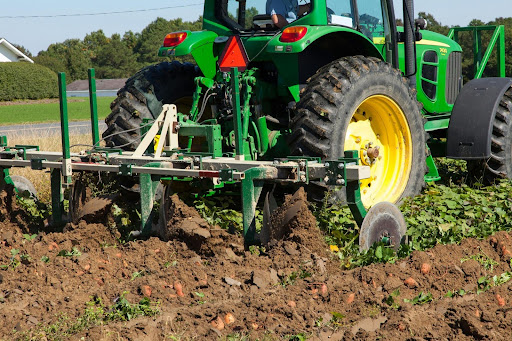
Tillage has been used for centuries as a part of seedbed preparation for farmland, but the equipment used for tilling has made major advancements over time. From initial forked plows to large mechanical equipment, plowing the soil has become more efficient.
Today, utilizing primary tillage tools, as well as those needed for secondary tillage, not only makes the task at hand less arduous but it is critical to producing significant crop yields and maintaining tillage operations.
In this article, we will go more in-depth into what tillage is, the different tillage systems you can use, which kind of tillage equipment is needed, and how to choose the most suitable tools for your land and chosen method.
What Is Tillage in Agriculture?
Tillage is the activity of churning the soil before planting. It acts to prepare the soil, control weeds, enhance soil health with additional nutrients, and increase crop production. What used to be a manual process has now become more automated with mechanical tillage equipment doing most of the work.
Within this agricultural process are two important steps: primary tillage and secondary tillage.
-
Primary Tillage: Primary tillage involves overturning and blending soil that has never been touched or contains your previous crop residue. This technique delves deeper into the soil than secondary tillage to ensure roots can go down deeper. Primary tillage equipment like moldboard plows, disk plows, chisel plows, and subsoilers are used in this step of soil preparation.
-
Secondary Tillage: Next comes secondary tillage, which is used for further soil disturbance by breaking down clumps, leveling the soil, and creating a smoother finish for your seedbed so it’s suitable for planting. This step enhances soil structure, promotes better air and soil moisture retention, and controls weeds. For secondary tillage, you can use disk harrows, field cultivators, rotary tillers, or harrows.
Types of Tillage Equipment
A wide variety of equipment is available for primary and secondary tillage techniques. What you’ll need will largely depend on tillage use, soil type, crop, and required weed control.
Tillage Equipment by Use
| Equipment Type | Tillage Use | Reasons for Use | Soil Type | Crop | Weed Control |
|---|---|---|---|---|---|
| Plow (Moldboard) | Primary | Deeply buries crop residue, offers weed control, and prepares for seedbed | Heavy, clayey soils | Row crops like corn | Excellent for burying weed seeds |
| Chisel Plow | Primary | Minimal soil inversion, reduces soil compaction preserves soil structure | Loamy to clayey soils | Wheat, corn, soybeans | Moderate; breaks weed life cycle |
| Disk Harrow | Secondary | Breaks up clods, offers weed control, smoothes soil surface, incorporates fertilizer | All types, especially after plowing | Most crops, before planting | Good for cutting and uprooting weeds |
| Subsoiler | Primary | Breaks up deeper soil layers (subsoil), reducing soil compaction and leaving topsoil undisturbed | Compacted, clayey soils | Deep-rooted crops like alfalfa | Not directly used for weed control |
| Cultivator | Secondary | Weed control between crop rows, aeration of soil, breaking soil crust | Loamy to sandy soils | Row crops | Excellent for in-row weed control |
| Rotary Tiller | Secondary | Fine soil tilth for seedbed preparation, incorporating small residues and offering weed control | All types, best for fine seedbed prep | Gardens, vegetable plots | Good for incorporating weeds into soil |
| Roller Packer | Secondary | Firming the soil surface, reducing soil clods and preparing a smooth seedbed | Loamy to sandy soils | Small-seeded crops | Indirectly aids by improving seedbed |
| Spike-Tooth Harrow | Secondary | Light weeding, breaking crust, smoothing soil surface after plowing | Light, sandy soils | Cereal grains, grasslands | Good for surface weed control |
How to Choose the Best Tillage Equipment?
With so many choices to choose from, you may be wondering how to choose the best tillage equipment, or tillage implements, for your tractor and particular farming requirements.
Below, we provide greater detail into how each tillage equipment works to help you understand which one would be most suitable for your soil conditions, as well as equipment for sale through our online farm equipment platform.
Primary Tillage Implements
Plows
There are three types of plows used for tilling today: moldboard, chisel, and disc harrows.
Moldboard Plow
A moldboard plow is used to deep till the soil, bury crop residue and weeds deep into the soil, and prepare for the seedbed.
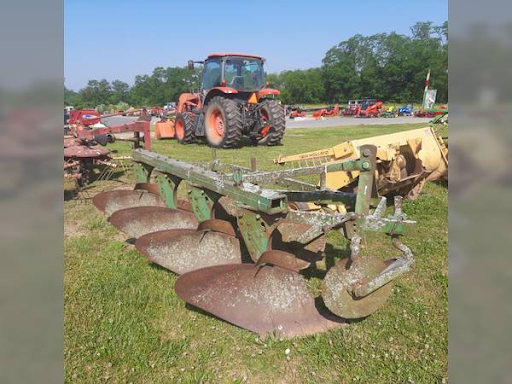
[CTA: Shop Now]
Chisel Plow
This kind of plow is used for deep tillage but actually loosens and aerates the soil’s organic matter in such a way that crop residue remains on the soil surface. This is a great tool to break up soil compaction while also minimizing risk of soil erosion and runoff.
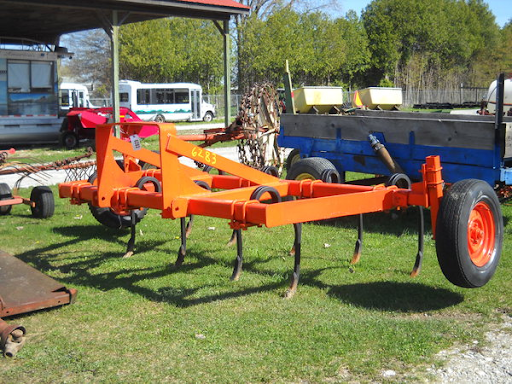
[CTA: Shop Now]
Disc Harrow
A disc harrow can be used to pulverize soil and clods, mix in crop residue, increase weed control, offer soil aeration, and smooth the soil surface so it’s ready for secondary tillage.
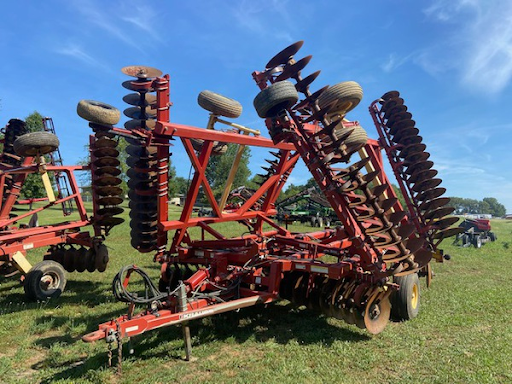
[CTA: Shop Now]
Subsoilers
If you have really hard soil you want to break up without disturbing the topsoil like a plow, you can use a subsoiler. It will break up soil much deeper than a plow can reach to reduce soil compaction. This method and equipment is good for deep-rooted crops.
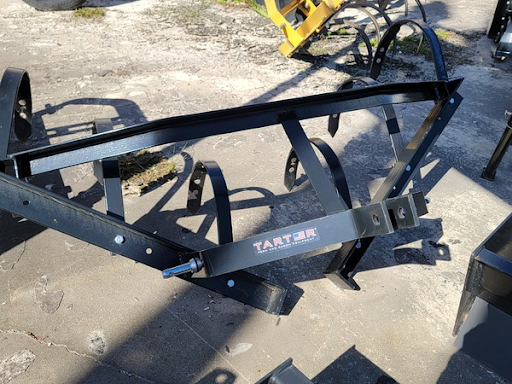
[CTA: Shop Now]
Secondary Tillage Implements
After primary tillage has been completed, you can move on to secondary tillage using one of the equipment options listed below.
Cultivator
After soil has been broken up from primary tillage, you can use a cultivator to mix in additional soil and fertilizer, as well as fragment smaller weeds that appear over time to prevent them from overtaking your crops.
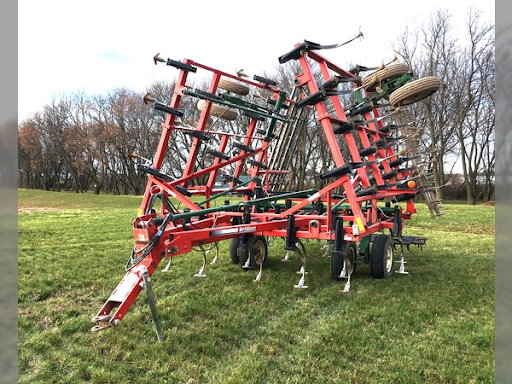
[CTA: Shop Now]
Rotary Tiller
Rotary tillers can sometimes be used for both primary and secondary tillage. It will continue to break down clods and aid seedbed preparation.
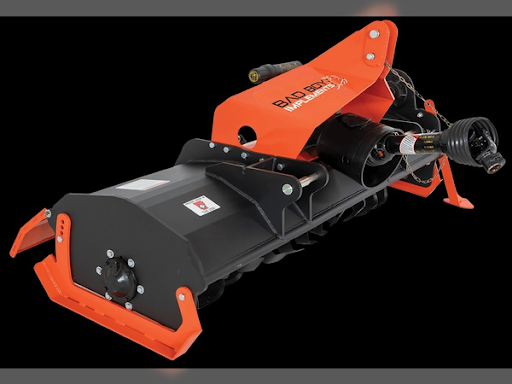
[CTA: Shop Now]
Roller Packer
Roller packers are often used to compress soil down after plowing in preparation for planting.
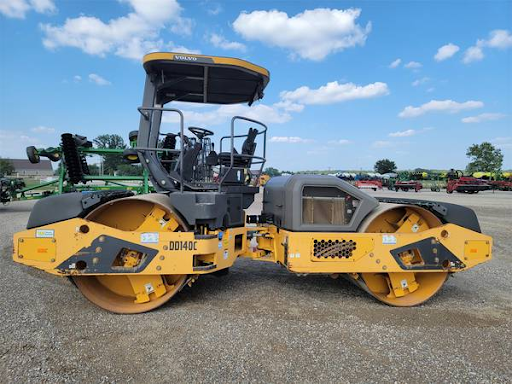
[CTA: Shop Now]
Spike-Tooth Harrow
This tillage tool helps spread clods, manure, grasses, and soil evenly, offering a smooth bed for planting.
[CTA: Shop All Tillage Equipment]